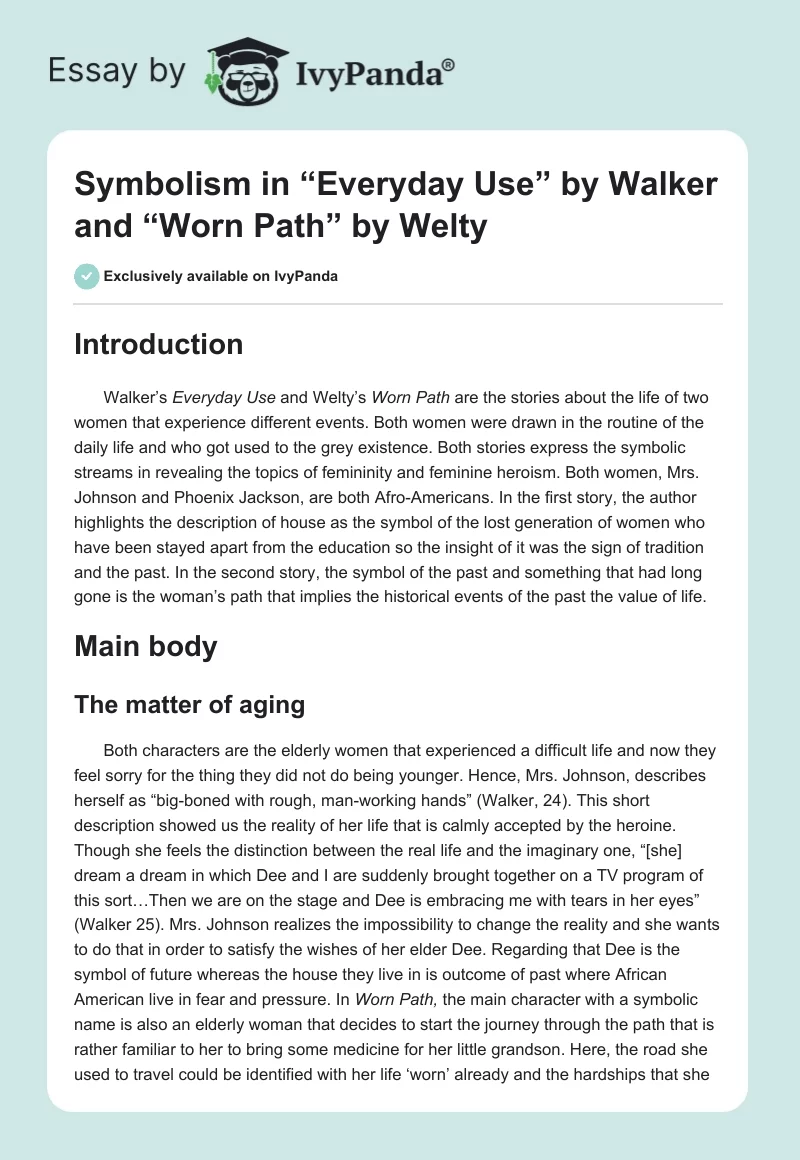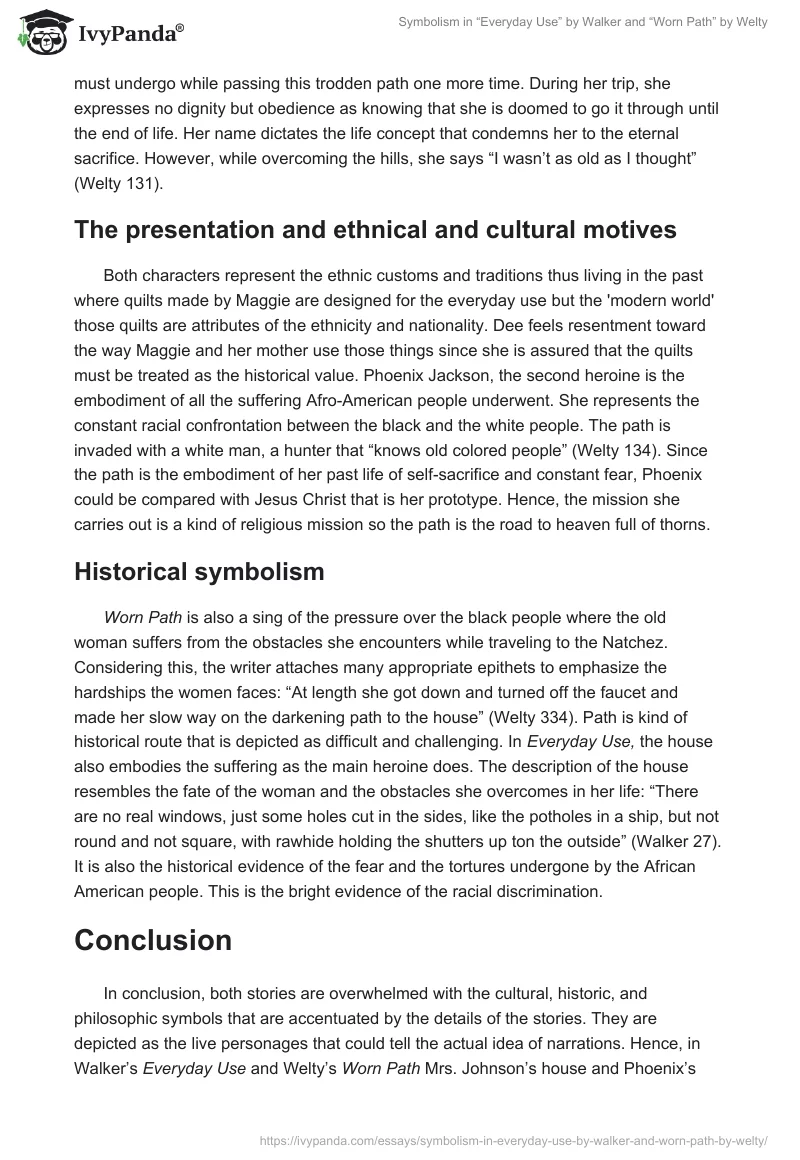Introduction
Walker’s Everyday Use and Welty’s Worn Path are the stories about the life of two women that experience different events. Both women were drawn in the routine of the daily life and who got used to the grey existence. Both stories express the symbolic streams in revealing the topics of femininity and feminine heroism. Both women, Mrs. Johnson and Phoenix Jackson, are both Afro-Americans. In the first story, the author highlights the description of house as the symbol of the lost generation of women who have been stayed apart from the education so the insight of it was the sign of tradition and the past. In the second story, the symbol of the past and something that had long gone is the woman’s path that implies the historical events of the past the value of life.
Main body
The matter of aging
Both characters are the elderly women that experienced a difficult life and now they feel sorry for the thing they did not do being younger. Hence, Mrs. Johnson, describes herself as “big-boned with rough, man-working hands” (Walker, 24). This short description showed us the reality of her life that is calmly accepted by the heroine. Though she feels the distinction between the real life and the imaginary one, “[she] dream a dream in which Dee and I are suddenly brought together on a TV program of this sort…Then we are on the stage and Dee is embracing me with tears in her eyes” (Walker 25). Mrs. Johnson realizes the impossibility to change the reality and she wants to do that in order to satisfy the wishes of her elder Dee. Regarding that Dee is the symbol of future whereas the house they live in is outcome of past where African American live in fear and pressure. In Worn Path, the main character with a symbolic name is also an elderly woman that decides to start the journey through the path that is rather familiar to her to bring some medicine for her little grandson. Here, the road she used to travel could be identified with her life ‘worn’ already and the hardships that she must undergo while passing this trodden path one more time. During her trip, she expresses no dignity but obedience as knowing that she is doomed to go it through until the end of life. Her name dictates the life concept that condemns her to the eternal sacrifice. However, while overcoming the hills, she says “I wasn’t as old as I thought” (Welty 131).
The presentation and ethnical and cultural motives
Both characters represent the ethnic customs and traditions thus living in the past where quilts made by Maggie are designed for the everyday use but the ‘modern world’ those quilts are attributes of the ethnicity and nationality. Dee feels resentment toward the way Maggie and her mother use those things since she is assured that the quilts must be treated as the historical value. Phoenix Jackson, the second heroine is the embodiment of all the suffering Afro-American people underwent. She represents the constant racial confrontation between the black and the white people. The path is invaded with a white man, a hunter that “knows old colored people” (Welty 134). Since the path is the embodiment of her past life of self-sacrifice and constant fear, Phoenix could be compared with Jesus Christ that is her prototype. Hence, the mission she carries out is a kind of religious mission so the path is the road to heaven full of thorns.
Historical symbolism
Worn Path is also a sing of the pressure over the black people where the old woman suffers from the obstacles she encounters while traveling to the Natchez. Considering this, the writer attaches many appropriate epithets to emphasize the hardships the women faces: “At length she got down and turned off the faucet and made her slow way on the darkening path to the house” (Welty 334). Path is kind of historical route that is depicted as difficult and challenging. In Everyday Use, the house also embodies the suffering as the main heroine does. The description of the house resembles the fate of the woman and the obstacles she overcomes in her life: “There are no real windows, just some holes cut in the sides, like the potholes in a ship, but not round and not square, with rawhide holding the shutters up ton the outside” (Walker 27). It is also the historical evidence of the fear and the tortures undergone by the African American people. This is the bright evidence of the racial discrimination.
Conclusion
In conclusion, both stories are overwhelmed with the cultural, historic, and philosophic symbols that are accentuated by the details of the stories. They are depicted as the live personages that could tell the actual idea of narrations. Hence, in Walker’s Everyday Use and Welty’s Worn Path Mrs. Johnson’s house and Phoenix’s path only contributed to the character depiction and the atmosphere of the stories. In addition, both objects are also the historical symbols of the past events that refer to the period of racial discrimination.
Works Cited
Walker, Alice & Christian, Barbara. Everyday Use. US: Rutgers University Press, 1994.
Cahill, Susan, Women & fiction: short stories by and about women Signet Classics. Signet Classics, 2002.


